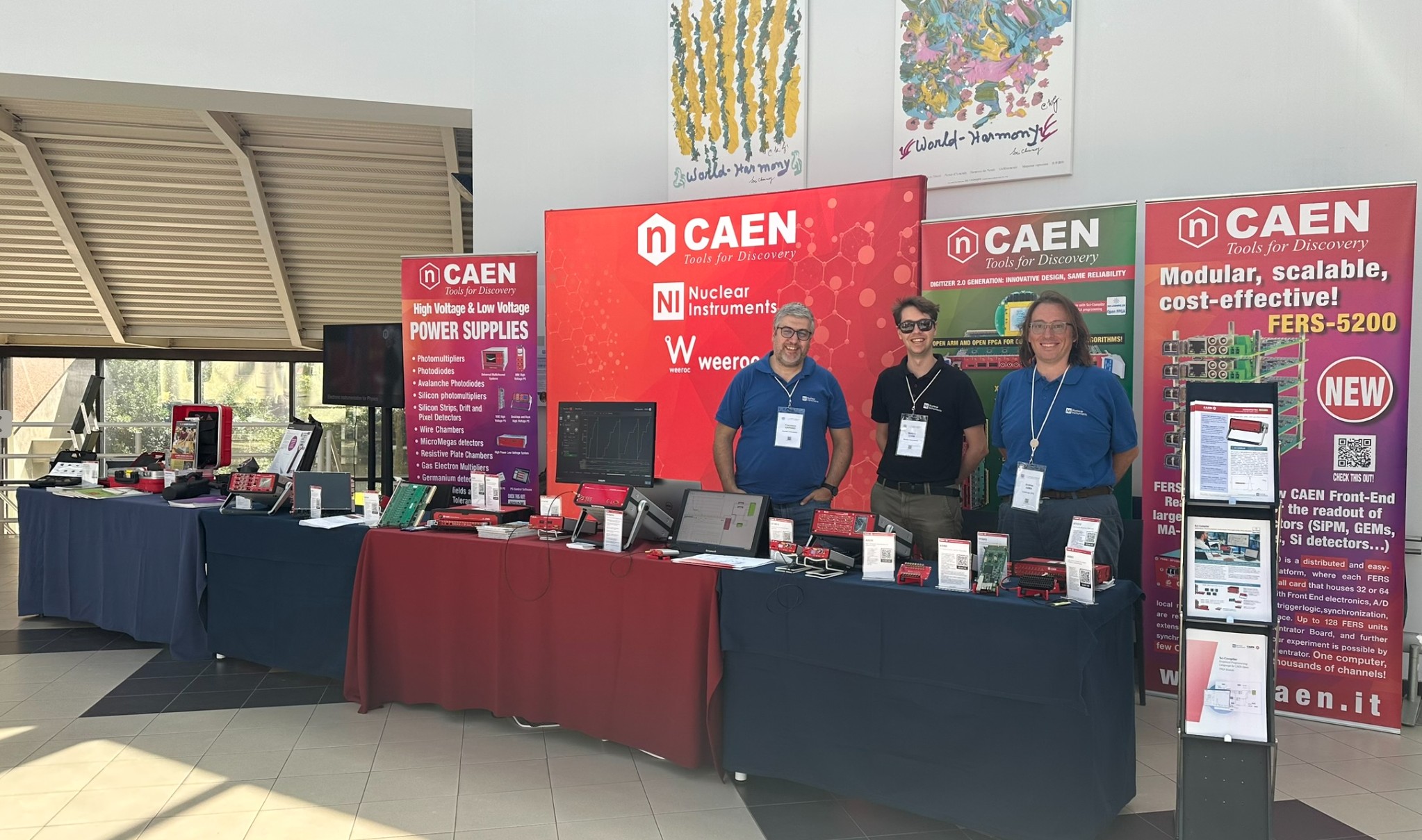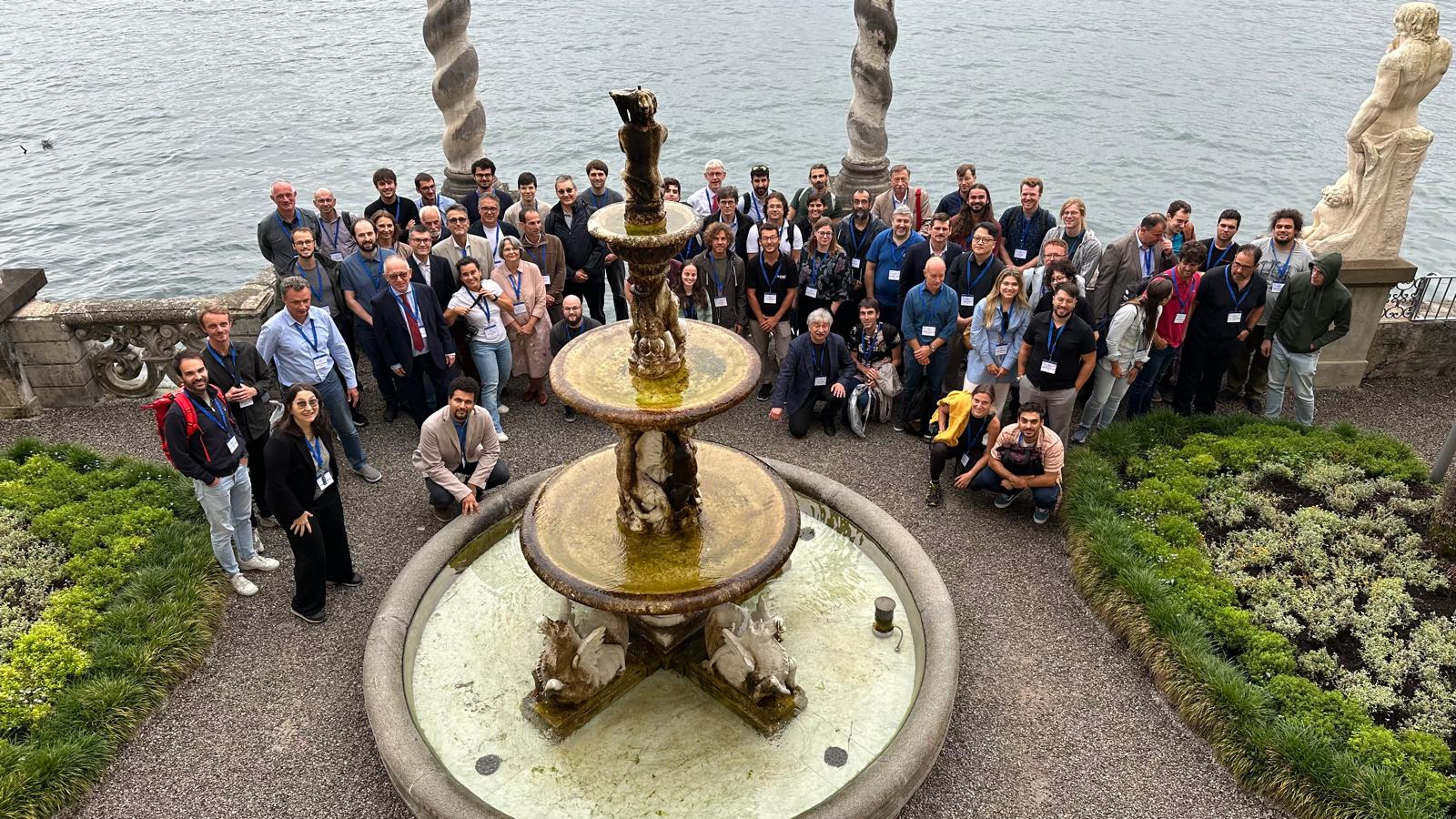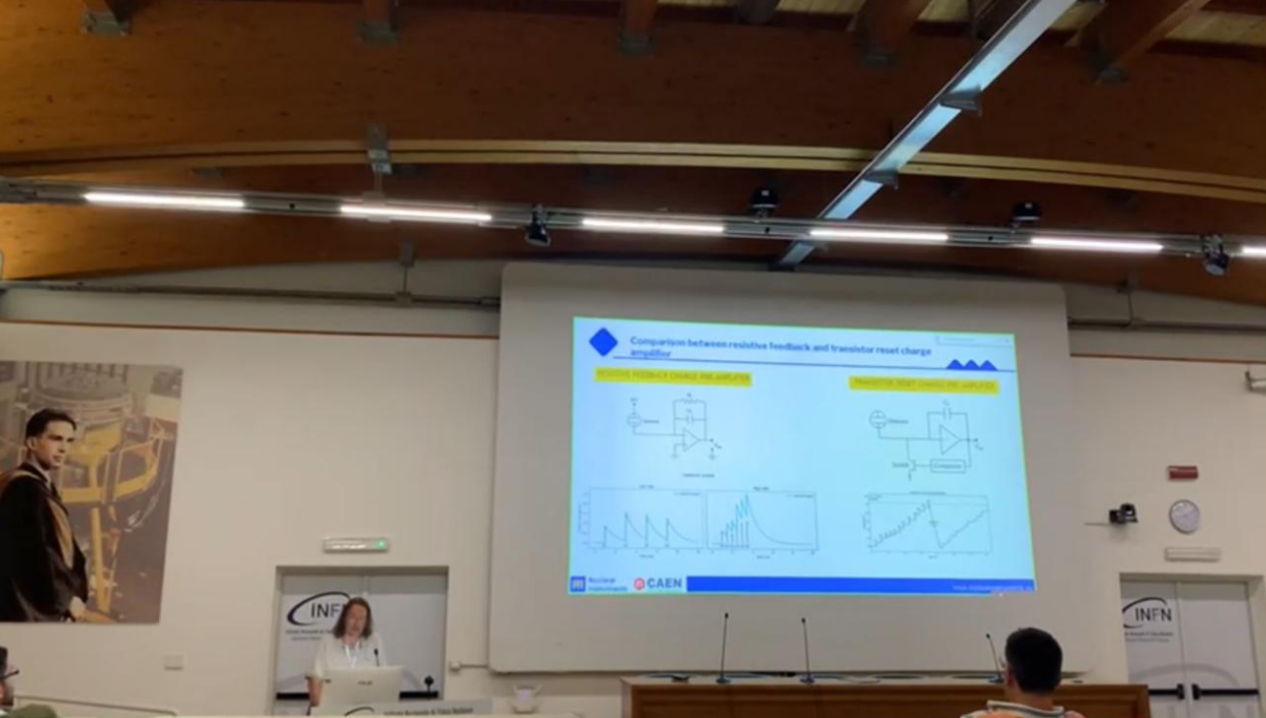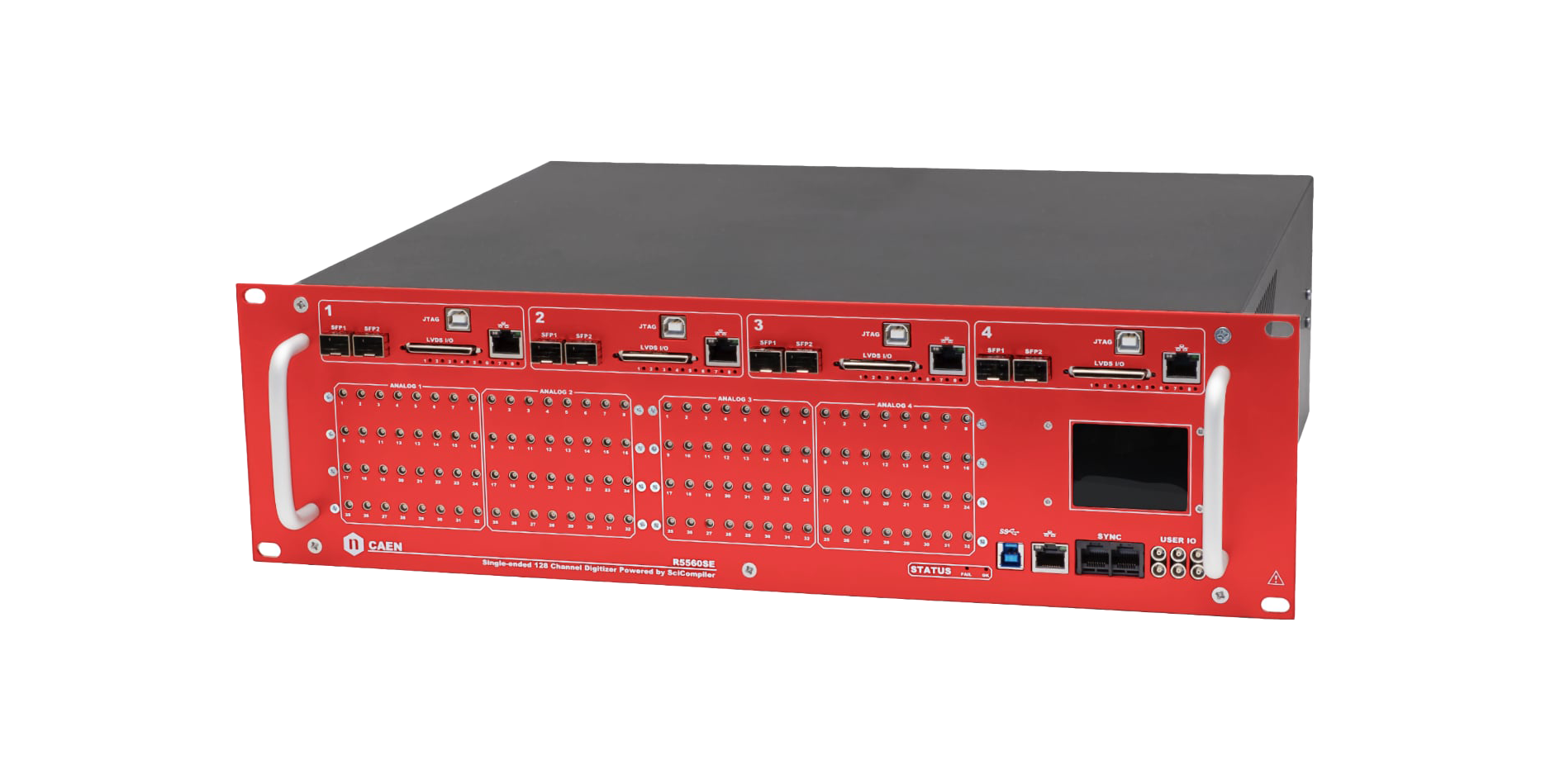
From November 1 to 8, 2025, Nuclear Instruments will participate in the IEEE NSS/MIC/RTSD in Yokohama. Here is the list of our talks and posters, including abstracts.
-
Date
Sep 21, 2025
Meet Us at NSS/MIC/RTSD 2025 in Yokohama
From November 1 to 8, 2025, Nuclear Instruments will join the community in Yokohama, Japan, for the IEEE Nuclear Science Symposium, Medical Imaging Conference and Room-Temperature Semiconductor Detector Conference (NSS/MIC/RTSD).
Here is the full list of our contributions — talks first, then posters — with session info and abstracts.
Talks
Sci-Compiler: Advancing FPGA-Based DAQ for Ultra-Fast Digitizers (#3477)
- Session: Technical Session II (TS-02-01)
- Date & Time: Wednesday, 5 November, 10:00–12:00
- Location: G312 & G313
Authors: A. Abba¹, F. Caponio¹, V. Arosio¹, S. Carsi¹, D. Bianchi¹, A. Cusimano¹, Y. Venturini², C. Tintori², A. Mati², L. Colombini², M. Bianchini², V. Bottiglieri²
¹ Nuclear Instruments, Lambrugo; ² CAEN SpA, Viareggio
Abstract
The latest generation of ultra-fast digitizers is pushing the limits of FPGA-based data acquisition (DAQ) architectures. New platforms such as the CAEN V2730 (32 channels, 14-bit at 500 MSPS), V2751 (16 channels, 16-bit at 1 GSPS), and the Nuclear Instruments DAQ121/DAQ141 (32 channels, 12/14-bit at 1 GSPS), together with the DT9000 (8 channels, 14-bit at 5 GSPS), demand a new approach to real-time signal processing.
Traditional FPGA designs cannot directly sustain event reconstruction at sampling rates of 1–5 GSPS. To address this challenge, Sci-Compiler has been re-engineered to support time-multiplexed signal processing, transforming a single GHz data stream into multiple parallel buses running at lower frequencies. This required the redesign of digital energy filters, CFDs, and trigger logic to operate seamlessly on interleaved data streams.
Sci-Compiler abstracts this complexity through its graphical design interface and modular IP library, enabling flexibility, scalability, and rapid reconfiguration for next-generation experiments.
The NUSES Space Mission Readout Architecture Using New FPGA Technology (#2455)
- Session: NSS-10 – Detectors for Astrophysics and Space Applications II
- Date & Time: Tuesday, 4 November, 14:15
- Location: G303
Authors: A. Abba¹, R. Aloisio²³, V. Arosio¹, F. Barbato²³, D. Borrelli⁹, L. Burmistrov⁵, F. Caponio¹, S. Carsi¹, V. Conicella¹⁰, A. Cusimano¹, I. De Mitri²³, A. Di Giovanni²³, U. Di Marcantonio¹⁰, S. Davarpanah⁵, Y. Favre⁵, R. L’Abbate¹¹, L. Ferrentino¹, F. Gargano⁴, M. Heller⁵, N. Mazziotta⁴, T. Montaruli⁵, R. Nicolaidis⁶⁷, F. Nozzoli⁶⁷, L. Pastori¹, L. Perillo⁸, P. Savina², C. Trimarelli²⁵
¹ Nuclear Instruments; ² GSSI; ³ INFN L’Aquila; ⁴ INFN Bari; ⁵ Université de Genève; ⁶ Università di Trento; ⁷ INFN Trento; ⁸ AGE Scientific; ⁹ Sophia High Tech; ¹⁰ Gran Sasso Tech; ¹¹ Thales Alenia Space
Abstract
The NUSES mission features two payloads: Ziré for cosmic/gamma rays and space weather, and Terzina for atmospheric Cherenkov light and UHECRs. A modular readout handles >1800 SiPM channels using Citiroc ASICs, low-power FPGAs, and Zynq Ultrascale+ SoCs with onboard neural network inference. This design combines density, power efficiency, and resilience for advanced space missions.
Design and Implementation of the ASTRI Camera Cherenkov Telescopes Readout and Control Electronics (#2445)
- Session: NSS-04 – Detectors for Astrophysics and Space Applications I
- Date & Time: Monday, 3 November, 16:15
- Location: G301 & G302
Authors: F. Caponio¹, A. Abba¹, V. Arosio¹, M. Corpora³, A. Cusimano¹, M. Lippi⁴, F. Lo Gerfo³, D. Mollica³, G. Pareschi², L. Pastori¹, P. Sangiorgi³, G. Sottile³
¹ Nuclear Instruments; ² INAF Brera; ³ INAF Palermo; ⁴ CAEN SpA
Abstract
The ASTRI telescope features a novel readout and control system built on Zynq UltraScale+ SoC, managing both DAQ and slow control for 37 PDMs (64 SiPM channels each). White Rabbit provides 1 ns timing; data are transmitted at 1 Gbps TCP/IP. The distributed OPC-UA slow control covers configuration, calibration, mechanics, and thermal regulation. The architecture ensures robustness for Cherenkov astronomy.
Interleaved SAR 20-bit ADC Architecture for Direct Sampling in X-ray Spectroscopy (#2102)
- Session: NSS-18 – DAQ, Trigger and Front End Electronics II
- Date & Time: Wednesday, 5 November, 14:15
- Location: G303
Authors: A. Abba¹, F. Caponio¹, E. Carlotti¹, S. Carsi¹, V. Arosio¹, M. Lazari¹, B. Pedretti², C. Fiorini², M. Carminati²
¹ Nuclear Instruments; ² Politecnico di Milano
Abstract
We developed a DSP technique for SDDs using a 20-bit SAR ADC with four interleaved channels (160 MSPS). A Zynq SoC handles phase alignment, calibration, trapezoidal filtering, and PC interfacing. Tests with ARDESIA SDD show FWHM 128 eV at 2 µs shaping and 140 eV at 1 Mcps, outperforming analog approaches.
Development of Super-MuSR’s 960 Channel SiPM Detector Barrel (#2512)
- Session: NSS-32 – Scintillation Detectors III
- Date & Time: Thursday, 6 November, 16:15
- Location: G303
Authors: D. Pooley¹, A. Abba², F. Akeroyd¹, P. Baker¹, F. Caponio², Z. Clark¹, P. Coode¹, S. Cottrell¹, A. Cusimano², J. Day¹, C. Evans¹, L. Galvin¹, A. Hillier¹, S. Howarth¹, A. Jones¹, D. Kirk¹, A. Lim¹, J. Lord¹, C. Macwaters¹, M. Moffat¹, D. Nixon¹, G. Olaofe¹, W. Perry¹, J. Preston¹, J. Prince¹, N. Rhodes¹, E. Schooneveld¹, G. Smith¹, R. Stewart¹, Z. Tam¹, D. Templeman¹, F. Zuddas¹
¹ STFC Rutherford Appleton Laboratory, UK; ² Nuclear Instruments, Italy
Abstract
Super-MuSR, under construction at ISIS (UK), will complete in 2027. It uses two barrels of 480 SiPM channels each inside a 0.65 T Helmholtz coil. The system features optimized scintillator + WLS fiber geometry, ESR reflectors, 1920 Hamamatsu S13360-1325 SiPMs, and per-channel biasing for gain matching. Results from the first assembled barrel staves will be shown, covering signal characteristics, stability, EMI isolation, and design optimizations.
Posters
Real-Time Active Collimation of Charge-Sharing Events in Monolithic SDD Arrays (#2266)
- Poster Panel: 325 (N-01-325)
- Date & Time: Monday, 3 November, 14:00–15:30
- Location: G3 & G4 – NSS Poster Session
Authors: B. Pedretti¹², A. Abba³, G. Borghi¹², F. Caponio³, G. Ticchi¹², P. Barcella¹², C. Tintori⁴, M. Carminati¹², C. Fiorini¹²
¹ Politecnico di Milano; ² INFN Milano; ³ Nuclear Instruments; ⁴ CAEN SpA
Abstract
Monolithic SDD arrays suffer from charge sharing. We implemented real-time active collimation on a CAEN DT5560-based DPP, integrating the CASPER algorithm and its AI variant for on-line CS recovery without sacrificing area.
Real-Time Pile-Up Discrimination in Muon Detectors via Embedded Deep Learning (#2393)
- Poster Panel: 68 (N-16-068)
- Date & Time: Wednesday, 5 November, 10:00–12:00
- Location: G3 & G4 – NSS Poster Session
Authors: A. Abba¹, F. Caponio¹, S. Carsi¹, A. Giannini¹, V. Arosio¹, D. Pooley², P. Baker², R. Stewart², N. Rhodes², E. Schooneveld²
¹ Nuclear Instruments; ² STFC RAL
Abstract
A CNN was trained for pile-up discrimination in muon detectors at Gcps rates. Embedded inference on Jetson Orin Nano and FPGA (via hls4ml) achieved low-latency online processing, enabling autonomous pile-up resilient readout.
Characterization of an ASIC-based Readout System for the SAND Experiment (#3009)
- Poster Panel: 136 (N-16-136)
- Date & Time: Wednesday, 5 November, 10:00–12:00
- Location: G3 & G4 – NSS Poster Session
Authors: C. Maggio¹, A. Di Domenico²³, P. Gauzzi²³, C. Tintori¹, Y. Venturini¹, A. Abba⁴, D. Ninci¹, A. Picchi¹, A. Mati¹, V. Bottiglieri¹
¹ CAEN SpA; ² Sapienza Roma; ³ INFN Roma; ⁴ Nuclear Instruments
Abstract
For DUNE’s SAND calorimeter, a Radioroc ASIC + FERS picoTDC approach extends dynamic range: ADC best for >100 mV signals, ToT best for small signals. Results validate the ASIC-based FERS solution for high-density neutrino detectors.
Accelerating the Design of Readout Systems for New Physics Experiments Using FPGA Visual Programming (#2387)
- Poster Panel: 128 (N-16-128)
- Date & Time: Wednesday, 5 November, 10:00–12:00
- Location: G3 & G4 – NSS Poster Session
Authors: A. Abba¹, F. Caponio¹, M. Petruzzo¹, S. Carsi¹, D. Bianchi¹, V. Arosio¹, M. Lazzari¹, A. Cusimano¹, C. Tintori², L. Colombini², Y. Venturini², M. Bianchini², V. Bottiglieri²
¹ Nuclear Instruments; ² CAEN SpA
Abstract
We present a visual programming ecosystem for FPGA DAQ design: Sci-Compiler. By connecting functional blocks (scalers, TDCs, PSD, energy filters), users build custom pipelines without HDL expertise. It supports a wide range of open FPGA boards, from single-channel to 128 channels at up to 5 GSPS, accelerating prototyping for nuclear physics experiments.
See You in Yokohama!
We look forward to meeting you at NSS/MIC/RTSD 2025 and discussing the future of digital instrumentation, FPGA-based DAQ, deep learning for detectors, space missions, and spectroscopy.



